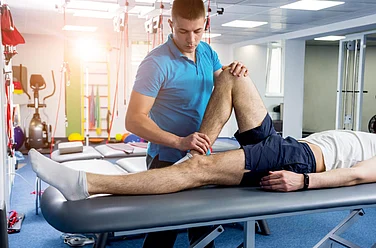In the realm of sports and athletics, the balance between training intensity and recovery is crucial for optimizing performance and minimizing injury risk. As athletes push their physical limits, the potential for overtraining and injury increases. Fortunately, advancements in technology, particularly artificial intelligence (AI), are transforming how athletes and coaches approach load monitoring. AI-powered load monitoring is emerging as a game-changer, offering data-driven insights that can lead to smarter, injury-free training.
Understanding Load Monitoring
Load monitoring refers to the assessment and management of the physical demands placed on athletes during training and competition. This encompasses various factors, such as:
Training Volume: The total amount of work done, often measured in duration or repetitions.
Intensity: The level of effort required, often expressed as a percentage of maximum effort.
Frequency: The number of training sessions over a specific period.
Effective load monitoring is essential for ensuring that athletes are training at optimal levels while allowing for necessary recovery to prevent injuries. Traditional load monitoring methods often rely on subjective measures, such as athlete feedback or manual tracking systems, which can be prone to errors and inconsistencies.
The Role of AI in Load Monitoring
AI-powered load monitoring systems utilize advanced algorithms and machine learning to analyze data collected from various sources, providing insights that are both comprehensive and highly accurate. Here are the key components of AI-driven load monitoring:
Data Collection
AI systems gather data from multiple sources, including:
Wearable Devices: Smartwatches, heart rate monitors, and GPS trackers collect real-time data on heart rate, distance covered, speed, and other metrics during training sessions.
Biomechanical Sensors: These sensors track movement patterns, joint angles, and muscle activity to assess how effectively an athlete performs specific exercises.
Training Logs: Athletes input their training sessions, which can be analyzed alongside physiological data.
Machine Learning Algorithms
Once data is collected, machine learning algorithms analyze it to identify patterns and correlations. These algorithms can predict injury risk based on an athlete’s training load, fatigue levels, and recovery status. For example, if an athlete consistently trains at high intensity without adequate recovery, the AI system can flag this as a potential risk for overtraining.
Real-Time Feedback
AI-powered systems provide real-time feedback to athletes and coaches, enabling immediate adjustments to training plans. If an athlete's data indicates they are at risk of injury, the system can suggest modifications, such as reducing intensity, altering training frequency, or implementing additional recovery strategies.
Benefits of AI-Powered Load Monitoring
Injury Prevention: One of the most significant advantages of AI-powered load monitoring is its potential to prevent injuries. A study published in the British Journal of Sports Medicine found that athletes who utilized load monitoring systems experienced a 50% reduction in injury rates. By analyzing training loads and recovery metrics, AI can help coaches and athletes identify when an athlete is at risk of overtraining, allowing for timely interventions.
Enhanced Performance: AI-driven insights enable athletes to optimize their training regimens, enhancing overall performance. By ensuring that athletes are training at the right intensity and volume, they can achieve peak performance without the risk of burnout or injury. Research from the Journal of Sports Sciences indicates that athletes who used data-driven training methods improved their performance metrics by an average of 20%.
Individualized Training Plans: Every athlete is unique, with different strengths, weaknesses, and recovery needs. AI-powered load monitoring systems can create personalized training plans based on individual data, ensuring that athletes receive tailored guidance that aligns with their specific goals.
Improved Recovery Strategies: AI systems can analyze an athlete's recovery status by assessing sleep quality, heart rate variability, and other physiological markers. This information can guide recovery strategies, helping athletes understand when to push harder and when to take a step back.
Impact on the Indian Sports Ecosystem: The integration of AI-powered load monitoring into the Indian sports ecosystem presents numerous opportunities for growth and development in the field of athletics.
Growing Sports Culture: India has seen a significant increase in sports participation and interest, particularly after the success of athletes in international competitions such as the Olympics and Commonwealth Games. The sports budget for the Ministry of Youth Affairs and Sports in India for 2024-2025 has been set at ₹2,578 crores (approximately USD 310 million), reflecting the government’s commitment to nurturing talent and improving sports infrastructure.
Enhancing Athlete Development: The implementation of AI-powered load monitoring can significantly enhance the development of athletes in India. With access to advanced technology, coaches can tailor training programs to individual athletes, promoting performance while reducing the risk of injuries. This personalized approach will be particularly beneficial for emerging athletes who may lack access to traditional coaching resources.
Increased Competitiveness: As Indian athletes compete on the global stage, AI-powered load monitoring can provide them with a competitive edge. By optimizing training loads and recovery strategies, athletes can perform at their best during critical competitions. The success of Indian athletes in recent years indicates a growing potential to excel in international sports, and leveraging technology can further boost this trajectory.
Accessibility of Technology: The rise of wearable technology and AI applications has made advanced training tools more accessible to athletes at all levels. As digital platforms and mobile applications become more prevalent, athletes across India, including those in rural areas, can benefit from AI-driven insights, democratizing access to high-quality training resources.
The Road Ahead
AI-powered load monitoring represents a transformative advancement in sports training, offering athletes and coaches the tools needed to optimize performance while minimizing injury risk. By harnessing the power of data and machine learning, athletes can train smarter, recover more effectively, and ultimately achieve their goals.For the Indian sports ecosystem, integrating AI-powered load monitoring can enhance athlete development, foster increased competitiveness, and promote a healthier sports culture. As India continues to invest in its sports infrastructure and technology, embracing innovations like AI will be crucial for nurturing the next generation of champions and ensuring a sustainable future for sports in the country.























